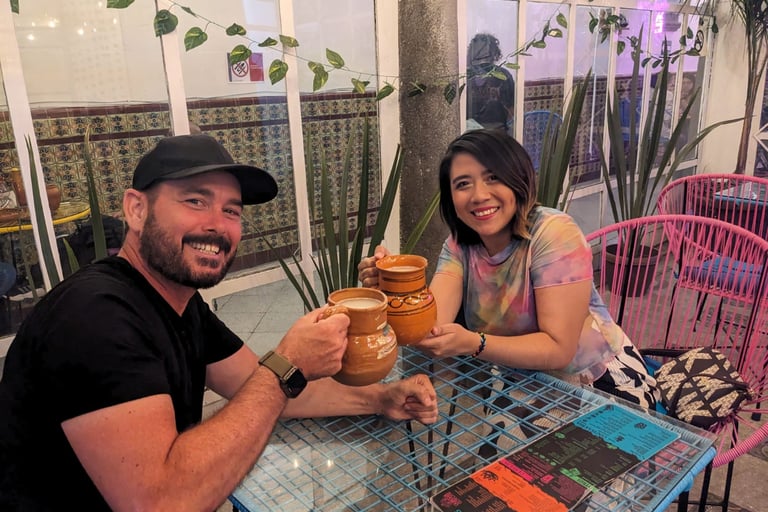An Authentic Cinco de Mayo in Puebla, Mexico
PUEBLA, MEXICO


During my month-long stay in Puebla, Mexico, I was fortunate enough to be in town for the Cinco de Mayo celebration that commemorates a historic battle that took place in Puebla on May 5, 1862. Often mistaken for Mexico's Independence Day (which is September 16th, 1810), this holiday celebrates the Mexican victory against the French.
In 1861, when Mexico suspended repayment of foreign debts to the United Kingdom, Spain and France, all three nations invaded the country to seize payment. The English and Spanish decided to withdraw in 1862 after deals were made for repayment, but the French, led by Napoleon III, remained intent on conquering Mexico and expanding colonial power in the Americas, seizing an opportune time during the American Civil War.
While Mexican soldiers were significantly outnumbered by the better-armed French, they unexpectedly won the victory against the French in the Battle of Puebla of May 5th, 1862 (although France was successful in taking Mexico City in 1864). The Mexican victory boosted morale and national pride, creating a sense of shared pride in Mexico's resistance efforts that would eventually lead to France's withdrawal in 1867.
Today, Cinco de Mayo symbolizes Mexico's determination to resist foreign aggression. Key aspects of the celebrations in Puebla include a re-enactment of the battle and a civic-military parade. Unfortunately, I missed the battle re-enactment because I did not know that it took place the day before the main holiday. However, I was able to catch the enormous civic-military parade that attracted thousands of spectators in the streets on the morning of May 5th. The parade featured many different military and police agencies, including the Mexican National Guard, Navy, and Air Force.
Interestingly, Cinco de Mayo is celebrated more in the United States than in Mexico, particularly in states that were formerly part of Mexico. For those who were not aware, many Mexican citizens were made US citizens overnight by the Treaty of Guadalupe Hidalgo in 1848 which brought an end to the Mexican-American War (1846-48). Mexico ceded 55 percent of its territory, including the present-day states of California, Nevada, Utah, New Mexico and most of Arizona and Colorado, as well as parts of Oklahoma, Kansas and Wyoming (and formal recognition of the earlier annexation of Texas).
In fact, the majority of Mexico does not celebrate Cinco de Mayo, with the exception of Puebla, Mexico, where the famous Battle of Puebla in 1862 took place. However, celebrations in Puebla look quite different than they do in the United States. While commercialization of Cinco de Mayo in the United States (and Canada) promotes the consumption of tequila, margaritas, and Mexican food, celebrations in Puebla start almost a month before May 5th and involve plays, concerts, sport matches, parades and fireworks. Tequila is not really part of the celebrations as Puebla has a rivalry with Jalisco - the birthplace of Tequila. Instead, Poblanos (people from Puebla) are more likely to drink pulque, a traditional alcoholic beverage that dates back to pre-hispanic times (perhaps as far back as 2000 B.C. as some archeological evidence suggests). Pulque is produced from the fermentation of fresh sap from agave plants that grow in Central Mexico. The fermented drink is viscous and white, and slightly acidic with an alcohol content between 4 and 7 percent. I tell people that it tastes like an alcoholic Yop, for those of you who are familiar with the famous yogurt drink that comes in many flavours. I recommend trying pulque, which is usually served in traditional ceramic cups.
Mole poblano is also consumed during Cinco de Mayo in Puebla. This rich, dark and savoury sauce is made with chocolate and often served with chicken (though vegetarian options are also available). It is considered the culinary jewel of Puebla, where the dish originated (though Oaxaca has made similar mole claims), with pre-hispanic roots, when it was called mulli and served during Aztec rituals. The arrival of Europeans brought many new ingredients that have been incorporated into the modern dish which now includes about 20-30 different ingredients (with essential ingredients that include chilli peppers, chocolate, plantains, almonds, pumpkin seeds, cinnamon, anise and cloves). As a rule of thumb, all moles contain some combination of chilli, fruit and nut. I never really appreciated mole until I tried mole poblano here in Puebla - so delicious! One of the restaurants next to the zocalo, Comal, serves an amazing mole poblano with a beautiful view of the historic Puebla Cathedral (if you can get one of the balcony tables).


